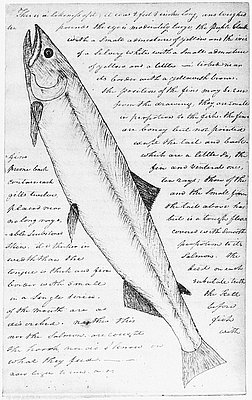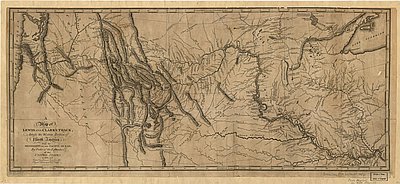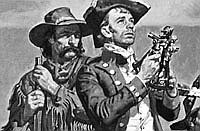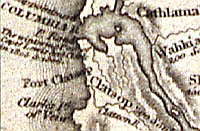The Return Home
At the Mandan Villages, Clark renewed acquaintance with the traders and Indian chiefs. With the resident trader Rene Jesseaume serving as interpreter, Clark suggested that Sheheke, chief in the Mandan Village of Mitutanka, accompany him to Washington, D.C., to meet President Jefferson. With promises that Jesseaume and his family could accompany him, Sheheke agreed.
From the villages, the Corps sped quickly down the Missouri and arrived in St. Louis on September 23, 1806. On arriving at St. Louis, Clark recorded, “we Suffered the party to fire off their pieces as a Salute to the Town [where] we were met by all the village and received a harty welcom from its inhabitants &c.” A joyous celebration ensued at a local tavern. The following morning, Clark recorded in his last entry: “I sleped but little last night however we rose early and Commencd wrighting our letters Capt. Lewis wrote one to the presidend and I wrote Govr. Harrison.”
They had returned safe and triumphant, but had they fulfilled their mission? On the main point, at the least, they had succeeded. Lewis and Clark had achieved the outline of Jefferson’s mission by tracing a route westward along the principal rivers to the Pacific Coast and making contact with Indian nations. They had done it against considerable odds and they had managed to collect a staggering amount of scientific information, an achievement that greatly pleased Jefferson. On specific points, though, the Corps had failed. In a letter meant for publication, Clark had written his brother, Jonathan, on September 23 that the captains “were completely successful and have therefore no hesitation in declaring that Such as nature has permited it we have discovered the best rout which does exist across the continent of North America in that direction.”
But that was more boast than reality. They had not found a commercial route west, which became obvious when overlanders found much better and more direct routes. They also had not established trade alliances with all of the tribes, and they could not claim to have even firmly established American sovereignty in the vast territory. Nonetheless, they brought back copious descriptions of the region and some strong impressions about its inhabitants and economic opportunities that awaited adventurers and entrepreneurs.
© William L. Lang, 2004. Updated and revised by OHP staff, 2014.
Sections
Related Historical Records
Clark's Drawing of White Salmon Trout
This is a copy of a sketch made by William Clark in February 1806, while Expedition members were at Fort Clatsop near the mouth of the Columbia River. …

Map of Lewis and Clark's Track
This map, titled A Map of Lewis and Clark's Track across the Western Portion of North America from the Mississippi to the Pacific Ocean, published in 1814, is …




